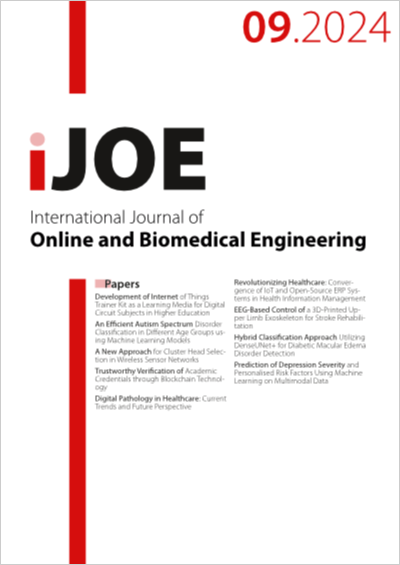Digital Pathology in Healthcare: Current Trends and Future Perspective
DOI:
https://doi.org/10.3991/ijoe.v20i09.47277Keywords:
Whole slide imaging, Image analysis, Artificial Intelligence, PathologyAbstract
Diagnosing a disease requires observing the affected tissues and drawing conclusions based on specific known features. Conventionally, a pathologist would diagnose the sample manually by placing it on a glass slide and viewing it under the microscope. These microscopes existed 400 years ago, but over the years, there have been modifications aimed at digitizing every possible diagnostic test. One of the major advantages of digitizing the process is the reduced time consumption for acquiring, processing, and analyzing the slides. Another positive aspect is the reduction in subjectivity achieved by utilizing artificial intelligence (AI) algorithms to classify and diagnose specific diseases. This is achieved by attaching a digital camera to the microscope, which captures images of the glass slides for subsequent processing and diagnosis. There has been a lot of research in this field, but its implementation has been hindered by challenges such as interoperability and high-resolution data, resulting in large file sizes. Various applications for whole slide imaging, such as disease diagnosis techniques, whole slide imaging (WSI) scanners, digital slide scanners, the Internet of Things (IoT), and AI, have been explored in this study. This paper reviews the trends and evolution of microscopes leading to present-day digital pathology scanners, with a major focus on one of the digital techniques, which is whole slide imaging. It also explores various areas where AI has been integrated into whole-slide imaging.
Downloads
Published
How to Cite
Issue
Section
License
Copyright (c) 2024 Neelankit Gautam Goswami, Niranjana Sampathila, Muralidhar G Bairy, Krishnaraj Chadaga, Anushree Goswami, Sushma Belurkar

This work is licensed under a Creative Commons Attribution 4.0 International License.


